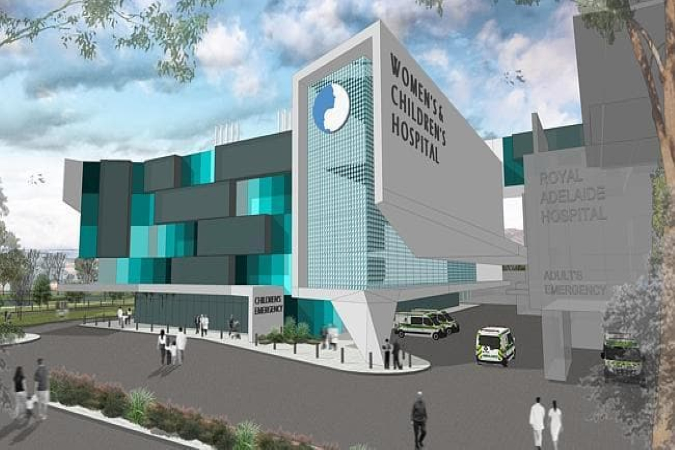04
Sep 2017
New Women's Hospital Announced in Adelaide, Children's Delayed
Published in News on September 04, 2017

There’s a new women’s hospital coming next door to the Royal Adelaide Hospital in the north-west of the Adelaide CBD in South Australia. Jay Weatherill, South Australian Premier, said the $528 million facility will connect to the RAH and expects a completion date of sometime in 2024.
“The new Adelaide women’s hospital, positioned next to the new Royal Adelaide Hospital, will be a modern, purpose-built facility that will care for women and newborns for many generations,” the Premier said.
The South Australian Government proposed moving the Women’s and Children’s Hospital from North Adelaide closer to the city before the 2014 state’s elections. Though the new Adelaide women’s hospital announced for CBD, the Children’s has been delayed for a short time.
The Government has also claimed a site for a new children’s hospital close to the other facilities would be identified by the end of 2019, offering what journalists call a “piecemeal approach”, with a multitude of services under one roof.
According to Mr Weatherill, the Government was acting on the “basis of the best advice we have,” and that was to “do it in phases.”
“Clinicians said the element that’s most important and should happen first is the bringing together of birthing services and the new Royal Adelaide Hospital, so if there’s complications, women can get that seamless set of services,” said Premier Weatherill.
The SA budget will offer an additional $24 million throughout the next two years, with a goal of an over $64.4 million upgrade of the current Adelaide Women’s and Children’s Hospital.
According to Health Minister Jack Snelling, there are numerous advantages to placing the two hospitals side-by-side. “Our doctors say this model will be of great benefit, in particular in situations where a mother may experience a difficult birth and require acute intensive care at the new Royal Adelaide Hospital,” the Minister said.
This will allow rapid access to quality health care for both mother and newborn.
“Having access to the new Royal Adelaide Hospital’s helipad will also significantly improve the timeliness of access to air services for high-risk maternal and neonate emergencies.”
South Australia provided facts that the new women’s hospital will provide tertiary level maternity, neonatal and perinatal infant mental health services.
“By co-locating with the new Royal Adelaide Hospital women with high-risk or emergency care needs will be able to receive timely and direct access to adult intensive and sub-specialty care,” the statement said.
This way, doctors and staff could decide case-by-case where seriously ill newborns could be treated.
The statement went on, “There will be some newborns that will need to be stabilised at the new Adelaide Women’s Hospital and transferred to the Adelaide Children’s Hospital for specialist paediatric care, including for example, where specialised surgery is required.”
“How the care models will work at both sites will be developed by expert clinicians.”
A number of staff members will be needed to work across from both the new women’s and children’s hospitals.
Before the latest state budget, the Government announced upgrades to other Adelaide hospitals, including the Queen Elizabeth, Lyell McEwin, Modbury, and Flinders Medical Centre.
Now, the staff at the current RAH are getting their final training before the state’s largest public hospital opening at their new premises on September 5, 2017.
Opposition Leader Steven Marshall said the Liberals were committed to a single new Women’s and Children’s Hospital, but that the Labor Government had cut back services and that the project has been plagued by delays that “almost” caused an abandonment of the original health plans.
Mr Marshall said, “The people of South Australia deserve the best health system in the country and only the Liberal Party will deliver that.”









